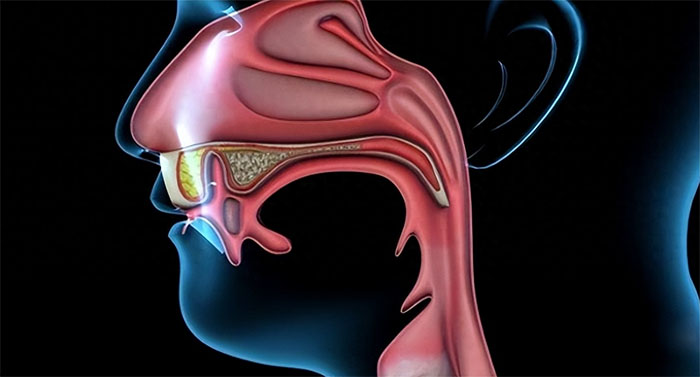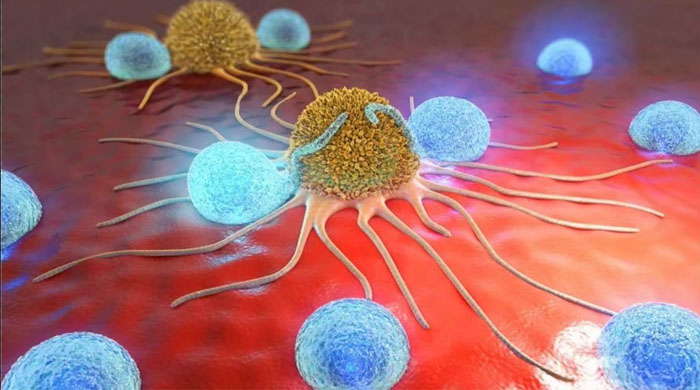- Login
- Cart{{shopingCartNum}}
- English
Nasopharyngeal Carcinoma (NPC) is a malignant tumor that occurs in the nasopharynx. The nasopharynx is located at the back of the nasal cavity and above the oral cavity, connecting to the throat, serving as the intersection of the respiratory and digestive systems. Although nasopharyngeal carcinoma is not common globally, it is a prevalent disease in certain regions, particularly in Southeast Asia and southern China.

The onset of nasopharyngeal carcinoma is not without trace, as it involves multiple factors:
1. EB Virus Infection: EB virus is closely associated with the development of nasopharyngeal carcinoma, with over 90% of nasopharyngeal carcinoma patients testing positive for EB virus. It is a significant risk factor, as it integrates into the host cell's DNA after infecting human oral epithelial cells and B cells, promoting malignant cell transformation.
2. Genetic Factors: Nasopharyngeal carcinoma exhibits a clear familial clustering, with genetic factors playing a significant role in its onset. Variations in certain susceptible genes may elevate the risk of developing cancer.
3. Environmental Factors: Environmental factors such as high nickel content in food and water, as well as nitrosamines in preserved foods, are also considered to be associated with the occurrence of nasopharyngeal carcinoma. Additionally, air pollution and unhealthy habits such as smoking should not be overlooked as contributing factors.

Early symptoms of nasopharyngeal carcinoma are often inconspicuous, easily overlooked, or misdiagnosed as other diseases. However, the following symptoms may indicate the presence of nasopharyngeal carcinoma:
1. Nasal obstruction and epistaxis: Frequent unilateral nasal obstruction or nasal bleeding, especially without a clear cause.
2. Hearing loss: Reduced hearing in one ear or tinnitus.
3. Enlarged neck lymph nodes: Painless neck lumps may indicate the spread of cancer cells to the lymph nodes.
4. Headaches: Persistent headaches, especially migraines.
5. Facial numbness or paralysis: Compression of facial nerves by the tumor may lead to abnormal facial sensations or muscle weakness.

If nasopharyngeal carcinoma is suspected, the following examinations will be conducted by a doctor for confirmation:
1. Endoscopic examination: Observing the nasopharynx using a fiberoptic nasopharyngoscope to identify abnormal growth.
2. Tissue biopsy: Obtaining tissue samples from suspicious areas for pathological analysis.
3. Imaging tests: CT scans, MRI, and PET scans are used to assess the size and spread of the tumor.
4. Blood tests: Testing for EB virus antibody levels to assist in diagnosis.
The treatment of nasopharyngeal carcinoma depends on the stage of cancer and the overall health of the patient. The main treatment methods include:
1. Radiotherapy: Nasopharyngeal carcinoma is sensitive to radiation, making radiotherapy the primary treatment method. Modern radiotherapy techniques, such as intensity-modulated radiation therapy (IMRT), enable more precise targeting of the tumor, reducing damage to surrounding healthy tissues.
2. Chemotherapy: Usually used in conjunction with radiotherapy, especially in advanced cases. Chemotherapeutic drugs kill cancer cells through systemic circulation.
3. Targeted therapy and immunotherapy: Novel treatment methods that target specific molecules on cancer cells or enhance the immune system's attack on cancer cells, providing additional treatment options.
4. Surgery: Although surgery is not commonly used for the treatment of nasopharyngeal carcinoma, in certain situations such as tumor recurrence or residual tumors after radiotherapy and chemotherapy, surgical resection may be necessary.

1. Understanding family history: If there is a family history of nasopharyngeal carcinoma, regular check-ups and screenings should be given more attention, as genetic factors are one of the risk factors.
2. Healthy diet: Reduce the consumption of foods containing nitrosamines, such as salted fish and preserved meats, which are particularly common in the southern regions of China where the incidence of nasopharyngeal carcinoma is higher. Increase the intake of fresh vegetables and fruits to provide a rich source of vitamins and antioxidants, which help enhance the body's resistance.
3. Avoiding harmful substances: Try to avoid prolonged exposure to polluted environments, including tobacco smoke, industrial emissions, and certain chemicals such as nickel and formaldehyde.
4. EB virus testing: In high-incidence areas or among individuals with a family history, serological testing for EB virus can serve as a preventive screening, as the majority of nasopharyngeal carcinoma patients test positive for EB virus.
5. Maintaining nasopharyngeal hygiene: Prevent colds, keep the nasopharynx clean, and avoid viral infections, as viral infections may increase the risk of nasopharyngeal carcinoma.
6. Timely treatment of inflammation: Actively treat inflammation, ulcers, and other diseases in the nasal cavity and nasopharynx, avoiding their prolonged presence and development into more serious problems.
7. Healthy lifestyle: Maintain good lifestyle habits, including regular schedules, moderate exercise, smoking cessation, and alcohol limitation, to improve overall health and immunity.

1. Pay attention to early symptoms: If symptoms such as unilateral nasal obstruction, morning phlegm with blood, tinnitus, hearing loss, headaches, and painless enlargement of neck lymph nodes occur, they should be regarded as warning signs and prompt medical attention should be sought.
2. Regular check-ups: Especially for individuals over 40 years old, comprehensive check-ups, including blood tests and specialized examinations of the nasopharynx, such as nasopharyngoscopy, should be conducted at least once a year.
3. Screening for high-risk populations: For individuals living in high-incidence areas or with a familial predisposition, targeted screening should be conducted more frequently.
Through the aforementioned measures, the risk of developing nasopharyngeal carcinoma can be effectively reduced, and early detection of the disease can be achieved, allowing for precious time to be gained for treatment. Early diagnosis and treatment are crucial for improving the cure rate and quality of life for nasopharyngeal carcinoma patients.
For nasopharyngeal carcinoma patients and survivors, life management is also crucial:
1. Regular follow-up visits: According to the doctor's advice, regular follow-up visits and imaging tests should be conducted to monitor the condition.
2. Healthy diet: Increase the intake of fresh vegetables and fruits to maintain a balanced diet.
3. Psychological support: Cancer treatment may bring psychological pressure, so seeking timely psychological support and assistance is important.
4. Rehabilitation exercise: Proper exercise helps in regaining physical strength and improving the quality of life.
Although nasopharyngeal carcinoma is not highly prevalent globally, it has a relatively high incidence in certain regions. Understanding its risk factors, early symptoms, and diagnosis and treatment methods is crucial for improving early detection and treatment outcomes. Through healthy lifestyle choices, regular check-ups, and proactive treatment, nasopharyngeal carcinoma patients can achieve a good quality of life.